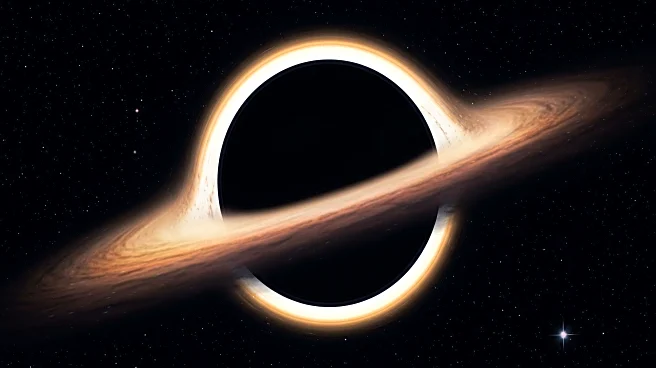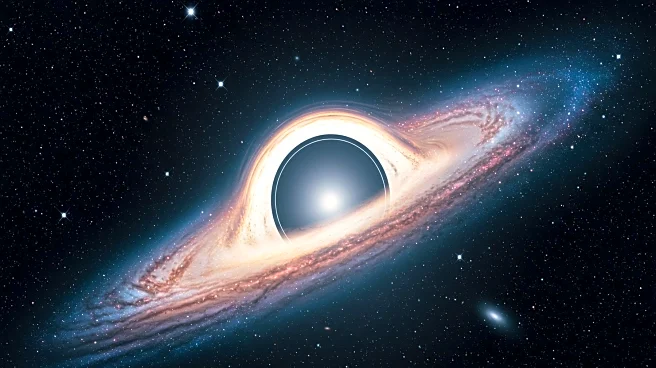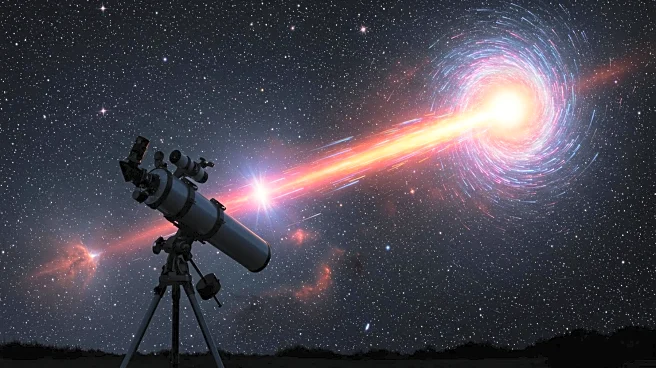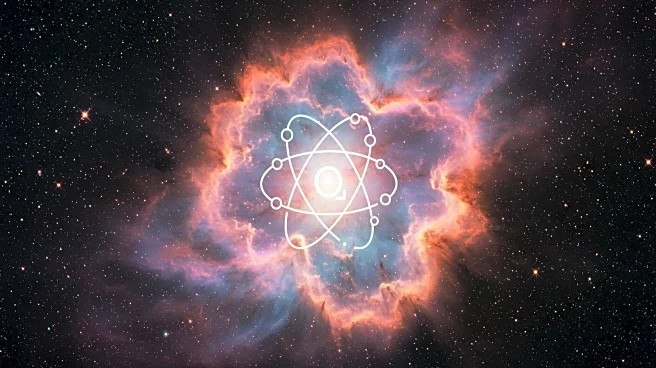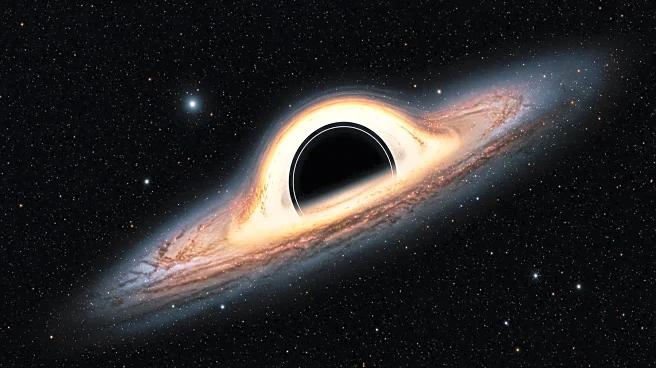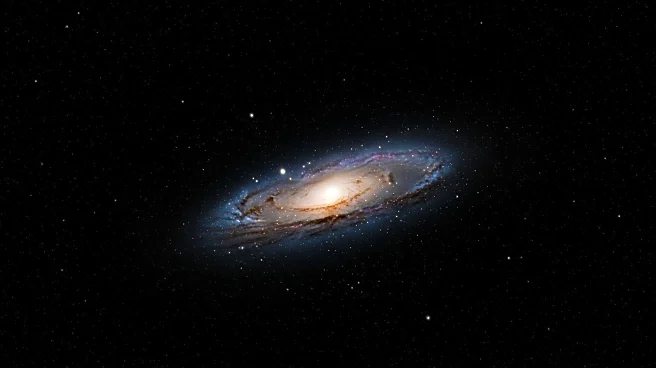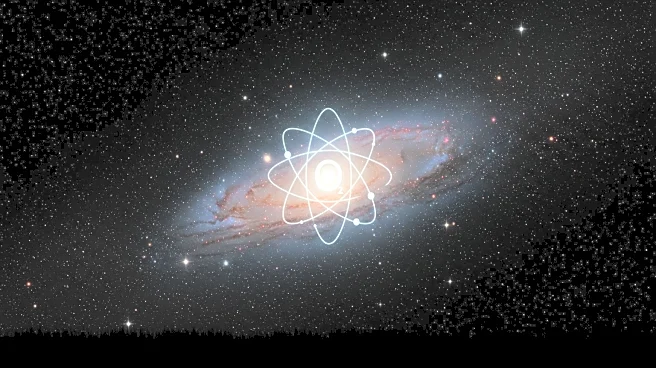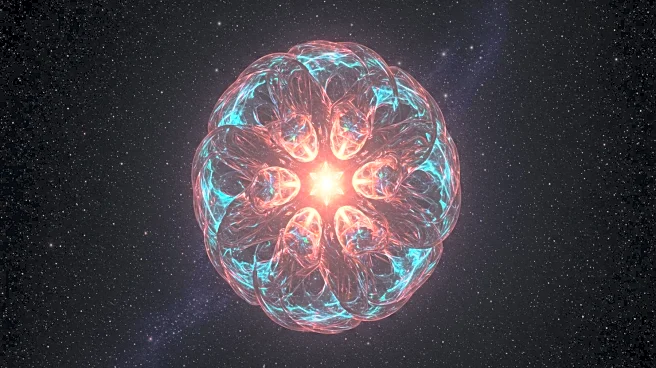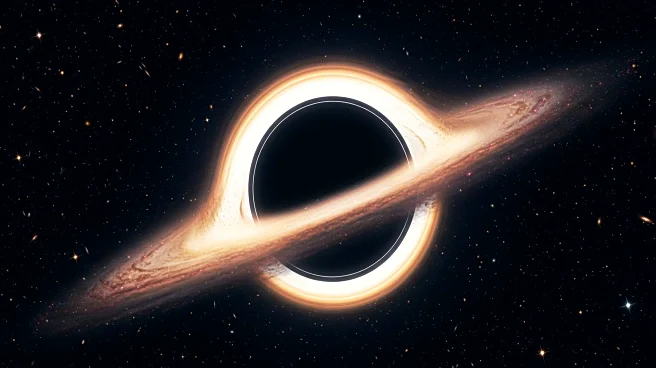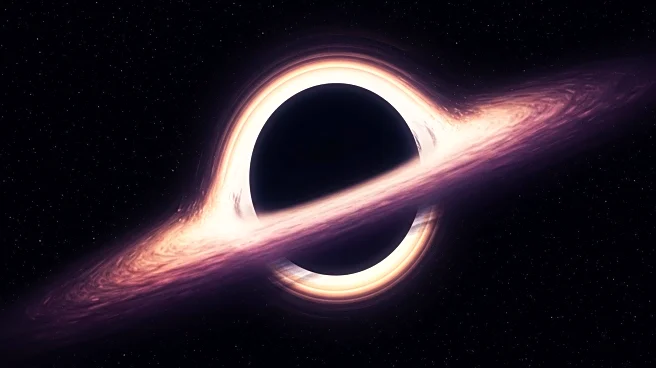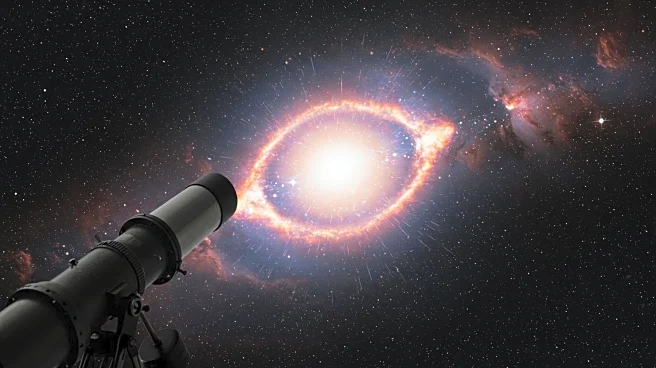What is the story about?
What's Happening?
A team of astronomers has discovered a supermassive black hole in the galaxy cluster CHIPS 1911+4455, located 6 billion light-years from Earth. This black hole has recently 'turned on' just a thousand years ago, a brief period in astronomical terms. The discovery was made using the Very Long Baseline Array and Very Large Array telescopes, which allowed researchers to observe the black hole's jets of material extending only about 100 light-years from its center. This is considered small compared to mature black holes, which can have jets stretching tens of thousands of light-years. The black hole's activity provides a unique opportunity to study the early stages of black hole influence on its surroundings, as most black holes studied have been active for millions of years.
Why It's Important?
Understanding how supermassive black holes awaken is crucial for solving fundamental questions about galaxy evolution. These black holes play a significant role in regulating star formation and shaping the universe's largest structures. By observing a black hole in the early stages of activity, scientists can study the process as it unfolds, rather than just seeing the end result. The surrounding galaxy is forming new stars at an extraordinary rate, potentially providing the fuel needed to activate the black hole. This discovery could offer insights into how black holes are triggered and how they influence their cosmic neighborhood, contributing to a deeper understanding of the universe's dynamics.
What's Next?
The research team plans to continue observing the black hole to watch its evolution over time. They aim to find more similar systems to enhance understanding of how the universe's most powerful objects begin to shape the cosmos. This ongoing study could revolutionize knowledge about the role of black holes in galaxy formation and evolution, providing a clearer picture of their impact on star formation and cosmic structures.
Beyond the Headlines
The discovery highlights the importance of combining observations from multiple telescopes to piece together different aspects of cosmic phenomena. This approach allows for high-resolution imaging and sensitivity to detect faint signals, offering a comprehensive view of the black hole's activity and its effects on star formation. The study also underscores the dynamic nature of galaxies and the complex interactions between black holes and their environments.
AI Generated Content
Do you find this article useful?
